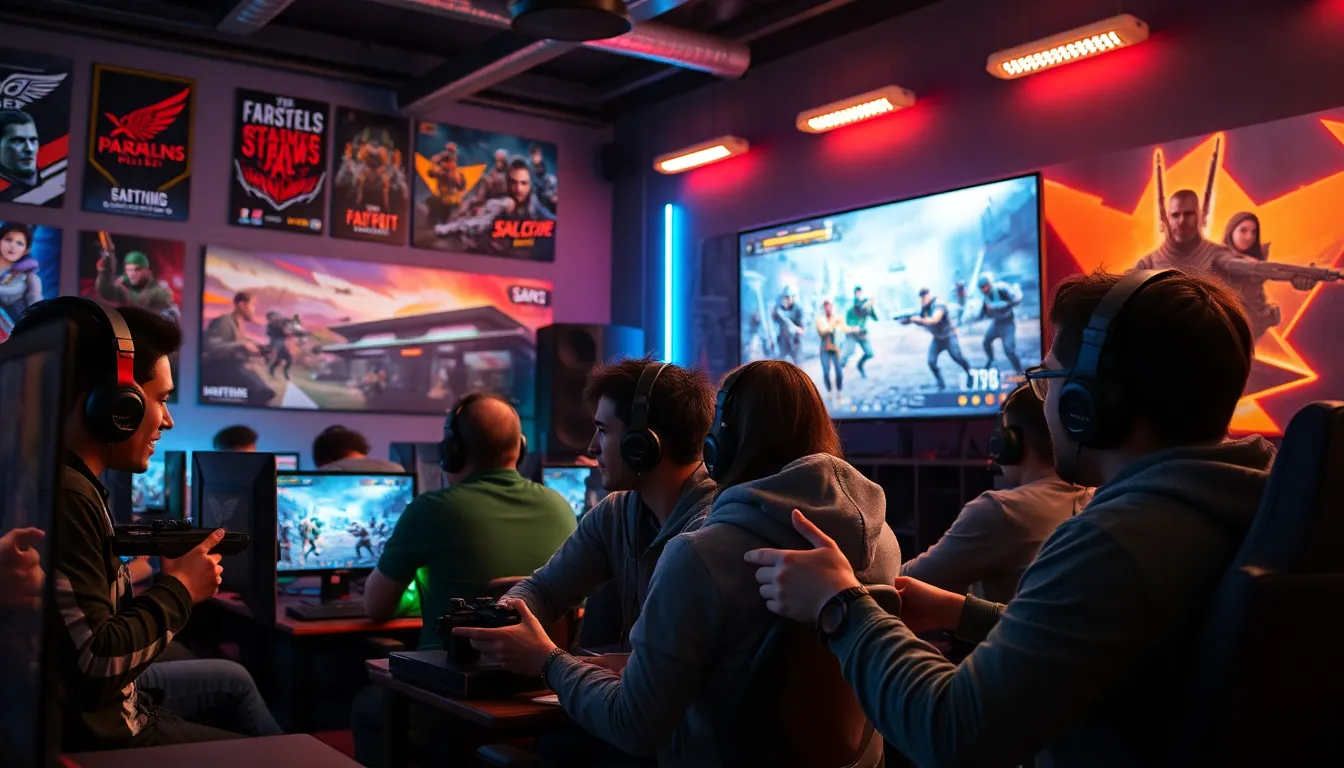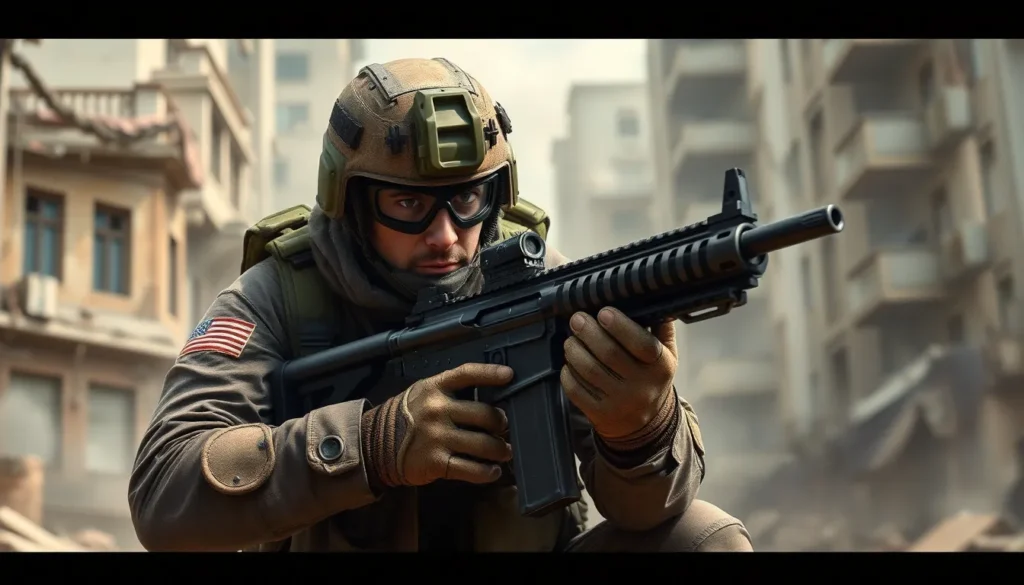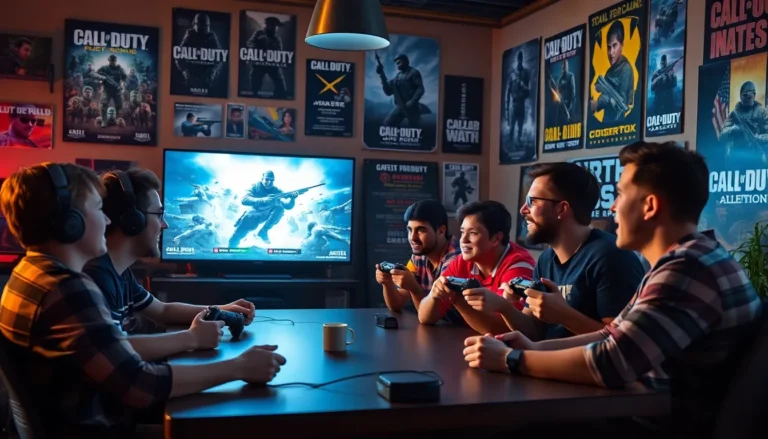Table of Contents
ToggleIn the world of gaming, First-Person Shooter (FPS) missions stand out as a thrilling blend of strategy and adrenaline. These missions immerse players in high-stakes scenarios where quick reflexes and sharp decision-making are crucial. Whether navigating through war-torn landscapes or battling alien invaders, each mission offers a unique challenge that keeps gamers on the edge of their seats.
FPS missions not only test a player’s skills but also enhance their ability to work as a team. With objectives ranging from stealthy infiltrations to all-out assaults, players must adapt their tactics to succeed. As they progress, they unlock new weapons and abilities, adding depth to the gameplay experience. Dive into the exhilarating world of FPS missions and discover what makes them a cornerstone of modern gaming.
Overview of FPS Missions
FPS missions deliver players immersive experiences within high-stakes environments, demanding rapid reflexes and strategic planning. These missions frequently involve various tactical objectives that challenge players to adapt quickly to dynamic scenarios.
Types of Objectives in FPS Missions:
- Assault scenarios: These missions focus on aggressive approaches, requiring players to engage opponents directly.
- Stealth infiltrations: Players must navigate enemy territory quietly, emphasizing strategic movement and timing.
- Rescue operations: Missions often involve saving hostages or critical assets, blending action with strategy.
- Defense missions: Players protect key locations or assets, requiring a solid understanding of positioning and teamwork.
Progression and Rewards:
Players unlock new weapons, skills, and abilities as they advance through missions. This progression enhances the gameplay experience, allowing players to tailor their strategies based on available resources.
Team Dynamics:
Teamwork plays a crucial role in FPS missions. Players must communicate effectively, coordinate tactics, and support one another to achieve common goals. Successful missions often stem from players sharing information and working seamlessly together.
FPS missions remain an integral aspect of modern gaming, combining excitement with strategic depth to engage players worldwide.
Types of FPS Missions


FPS missions fall into two primary categories: single-player missions and multiplayer missions. Each type offers distinct experiences, catering to various player preferences and styles.
Single-Player Missions
Single-player missions focus on solo gameplay, guiding players through narrative-driven stories or challenges. Players often face a series of objectives that unfold a storyline, allowing for character development and plot progression. Common elements within these missions include:
- Campaign Missions: Players engage in a detailed narrative, completing objectives within immersive environments. Campaigns often combine action with storytelling, enhancing engagement.
- Challenges: Players complete specific tasks, such as time trials or accuracy tests. These challenges encourage skill refinement and mastery of game mechanics.
- Side Missions: Players explore additional objectives outside the main campaign, frequently offering rewards and enhancing game lore.
Multiplayer Missions
Multiplayer missions thrive on player-versus-player dynamics, often requiring cooperation and strategy. They bring excitement through competitive or cooperative gameplay, with popular formats including:
- Team Deathmatch: Players form teams, competing to achieve the most eliminations within a set timeframe. This mode highlights reflexes and teamwork.
- Capture the Flag: Teams attempt to capture the opposing team’s flag while defending their own. This mission emphasizes strategy, coordination, and communication.
- Objective-Based Missions: Players focus on completing specific objectives, such as plant/defuse bombs or secure control points. Each objective demands unique strategies and roles within teams.
Both mission types leverage strategic elements to create gripping gameplay experiences. As players navigate through various scenarios, they refine their skills and deepen their understanding of game mechanics, regardless of mission type.
Design Elements in FPS Missions
Design elements fundamentally shape the experience in FPS missions. Level design and mission objectives critically influence gameplay dynamics and player engagement.
Level Design
Level design emphasizes creating immersive environments that challenge players. Designers consider layout, visual aesthetics, and interactivity to enhance gameplay experiences. Key components include:
- Terrain Variety: Incorporating urban, rural, and industrial settings keeps players engaged and forces strategic navigation.
- Cover Placement: Strategic positioning of cover allows players to utilize tactics effectively during combat, encouraging thoughtful movement.
- Verticality: Including multi-level designs enables diverse combat scenarios, fostering player creativity and tactical options.
- Chokepoints: Designing narrow passages creates opportunities for ambushes, pushing players to adapt their strategies.
- Interactive Elements: Adding destructible objects and environmental hazards increases dynamism, making the level feel alive.
Each of these factors contributes to the player’s immersion and tactical decisions during missions, enhancing the overall gameplay experience.
Mission Objectives
Mission objectives outline players’ goals, driving the narrative and gameplay flow. Objectives vary, creating diverse challenges that test various skills. Common objectives include:
- Assault: Players must attack and eliminate enemy forces to progress, requiring aggressive tactics and teamwork.
- Stealth: Completing tasks without detection emphasizes strategy and skillful maneuvering, appealing to players who favor patience and precision.
- Rescue: Missions focusing on saving hostages necessitate careful planning and execution, balancing aggression with caution.
- Defend: Protecting designated areas or assets challenges players to coordinate and reinforce positions against enemy onslaughts.
Each objective type informs different gameplay styles, ensuring players experience a wide range of tactical scenarios and engage in various facets of combat strategy.
Challenges in FPS Missions
FPS missions present various challenges, requiring players to navigate complex scenarios and adapt their strategies. These challenges include difficulty balancing and player engagement.
Difficulty Balancing
Difficulty balancing ensures that missions remain challenging yet achievable for players. Game developers assess player skill levels, adjusting enemy AI, resource availability, and mission objectives accordingly. For example, increasing enemy numbers or enhancing their accuracy can create more tension, while providing ammunition and health packs helps players maintain momentum. Adjustments must match the player’s skill progression without causing frustration or boredom. Effective difficulty balancing maintains interest and encourages mastery.
Player Engagement
Player engagement involves keeping players immersed and invested in mission objectives. Developers utilize narrative elements, rewarding gameplay loops, and varied environments to enhance engagement. Compelling storytelling, such as character backstories or mission context, creates emotional connections that motivate players. Dynamic environments with unexpected events or environmental hazards keep gameplay fresh and exciting. Regularly updated content, such as new weapons, skins, or modes, sustains interest by providing players with challenges and rewards that encourage continued play. Engaging players through these methods enhances their overall gaming experience in FPS missions.





